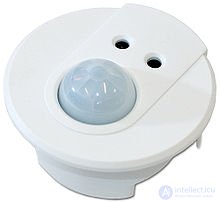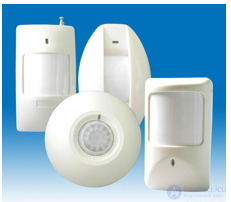Lecture
Motion Sensor - a sensor that detects the movement of any objects.
In everyday life, most often by this term is meant an electronic infrared sensor that detects the presence and movement of a person, and the switching power supply of electrical appliances (most often lighting).
Sometimes motion sensors are mistakenly called accelerometers; in fact, accelerometers cannot sense rectilinear uniform motion, but they sense orientation relative to the vertical axis even in complete rest.


Passive infrared motion sensor
Multisensor 3 in one: Infrared motion and light sensor and IR receiver
Disassembled motion sensor
The principle of operation is based on tracking the level of infrared radiation in the field of view of the sensor (usually pyroelectric). The signal at the sensor output monotonously depends on the level of infrared radiation averaged over the field of view of the sensor. When a person (or other massive object with a temperature higher than the background temperature) appears, the output of the pyroelectric sensor increases. In order to determine whether the object is moving, the sensor uses an optical system - a Fresnel lens. Sometimes instead of a Fresnel lens, a system of concave segment mirrors is used. Segments of the optical system (lenses or mirrors) focus infrared radiation on the pyroelement, which produces an electrical pulse. As the source of infrared radiation moves, it is captured and focused by different segments of the optical system, which forms several successive pulses. Depending on the sensitivity setting of the sensor, 2 or 3 pulses must be sent to the sensor pyroelement to output the final signal.
Sensors used in alarm systems have an output relay of the “dry contact” type (normally closed).
Sensors used for lighting control usually use solid-state switches based on thyristors or triacs for switching loads.
Comments
To leave a comment
Sensors
Terms: Sensors